 Nicolay V. (Nick) Tsarevsky obtained his M.S. in theoretical chemistry and chemical physics from the University of Sofia, Bulgaria (1999) and Ph.D. in chemistry from Carnegie Mellon University in Pittsburgh, PA (2005), where he worked in Prof. Kris Matyjaszewski’s labs. His work was related to the synthesis of functional polymers by atom transfer radical polymerization and the development of rules for rational selection of the catalyst for various reaction media, including aqueous solvents. He has authored and coauthored more than 65 peer-reviewed journal papers or book chapters, a textbook for high school students, and several patents. He was awarded several national awards, including the Kenneth G. Hancock Memorial Award in Green Chemistry (2003) and the National Starch & Chemical Award (2008). Nick was Visiting Assistant Professor at the Department of Chemistry at Carnegie Mellon University (2005-6), Associate Director of the CRP Consortium (2006), and a member of the founding team of ATRP Solutions, Inc., of which he served as Chief Science Officer (2007-10). He was secretary (2005) and chair (2006) of the Polymer Group of the Pittsburgh Section of ACS, as well as chair of the Section (2009). He joined the Department of Chemistry at Southern Methodist University in the summer of 2010. Current research interests include polymerization techniques, functional materials, coordination chemistry and catalysis, and the chemistry of hypervalent compounds.
Nicolay V. (Nick) Tsarevsky obtained his M.S. in theoretical chemistry and chemical physics from the University of Sofia, Bulgaria (1999) and Ph.D. in chemistry from Carnegie Mellon University in Pittsburgh, PA (2005), where he worked in Prof. Kris Matyjaszewski’s labs. His work was related to the synthesis of functional polymers by atom transfer radical polymerization and the development of rules for rational selection of the catalyst for various reaction media, including aqueous solvents. He has authored and coauthored more than 65 peer-reviewed journal papers or book chapters, a textbook for high school students, and several patents. He was awarded several national awards, including the Kenneth G. Hancock Memorial Award in Green Chemistry (2003) and the National Starch & Chemical Award (2008). Nick was Visiting Assistant Professor at the Department of Chemistry at Carnegie Mellon University (2005-6), Associate Director of the CRP Consortium (2006), and a member of the founding team of ATRP Solutions, Inc., of which he served as Chief Science Officer (2007-10). He was secretary (2005) and chair (2006) of the Polymer Group of the Pittsburgh Section of ACS, as well as chair of the Section (2009). He joined the Department of Chemistry at Southern Methodist University in the summer of 2010. Current research interests include polymerization techniques, functional materials, coordination chemistry and catalysis, and the chemistry of hypervalent compounds.
Please follow the link for further information on Nick’s research group and his recent paper in Polymer Chemistry.
What was your inspiration in becoming a chemist?
The secrets of nature fascinated me since my early childhood. When I was about 10 or so, I started spending my summer vacation at our house in the outskirts of Vitosha mountain near Sofia. In that area, pretty rustic at the time, I started collecting various minerals, insects, and medicinal plants. I thought I would become a biologist and I was reading a lot of books and textbooks on biology. When I was in 5th grade, my parents and I visited friends who were teachers. I asked if they could find for me the 8th grade biology textbook, which was the only one missing in my collection, but for some reason I was given the textbooks on both biology and chemistry. I started browsing and reading them and by the time we had to leave for home several days later, I had fallen in love with the newly-discovered science of chemistry to such an extent that I took with me the chemistry textbook but left behind the biology book. I quickly decided to have my own home lab, and very soon, with the help of my parents’ colleagues and friends, I had a pretty decent collection of glassware and chemicals. That is when my love for chemistry started and nothing has been able to extinguish it since then. My high school teacher at the National School of Mathematics and Science, Mrs. Tanya Apostolova, helped me start some research at the University of Sofia when I was in 9th grade. I entered the University of Sofia to study chemical physics and theoretical chemistry, but during my last year there, one of my professors, Dr. George S. Georgiev, introduced me to polymer science and the exciting world of macromolecular materials. He recruited me to his lab to do research, which was the basis of my M.Sc. thesis. My studies continued in Kris Matyjaszewski’s lab at Carnegie Mellon University, where I learned a great deal and became more convinced than ever that precise measurements, determination of exact numbers, and understanding of reaction mechanisms and kinetics are crucially important to rationally select the optimal reaction conditions needed to make materials. In other words, I have been faithful to chemistry since 5th grade and never did or never will abandon it.
What was the motivation behind the research in your recent Polymer Chemistry paper? (DOI: 10.1039/c1py00495f)
Controlling molecular characteristics, such as molecular weight, architecture or placement of functional groups is one of the most important goals in synthetic polymer chemistry. However, sometimes the synthesis of specific macromolecules can be rather complicated and time consuming. We were trying to find an easy, and preferably relatively inexpensive, strategy to synthesize branched macromolecules without the need to employ pre-made inimers, which are often synthesized via multi-step procedures. We decided to explore the possibility to exchange “ligands” attached to hypervalent iodine centres with the polymerizable methacryloyloxy groups, yielding inimers in situ. The exchange turned out to be efficient and the homolytic cleavage of the newly formed iodine-oxygen bonds gave rise to branched or transiently crosslinked macromolecules. We were inspired by earlier work on ligand exchange reactions at hypervalent iodine atoms and also by work demonstrating that hypervalent iodine compounds can participate in a number of radical reactions, including initiation of radical polymerization.
Why did you choose Polymer Chemistry to publish your work?
Polymer Chemistry is a very exciting new journal, in which high quality and high impact work is published on mechanistic studies of polymerization or polymer modification, synthesis of materials, characterization, applications, etc. All major aspects of polymer chemistry are thus covered in the journal and it is only natural that polymer chemists would want their work to be published there.
In which upcoming conferences may our readers meet you?
I will be attending the Spring ACS National Meeting in San Diego at the end of March 2012, where I will be giving a talk at a symposium honouring Kris Matyjaszewski. I also look forward to attending the Warwick Polymer Conference in July.
How do you spend your spare time?
In addition to chemistry, I love history and art, and I spend a lot of my time reading history books, mostly original sources, visiting museums, listening to opera recordings or going to the theatre or the opera house. I have been known to travel quite a distance to attend a performance of interest. I am happy I was given the chance to develop a course on “Chemistry and Technology in Art”, which I will offer in the spring semester of 2012. It will give me the opportunity to teach about all my three favourite subjects – chemistry, history, and art. This is still work in progress and I currently dedicate a significant fraction of my spare time to it.
Which profession would you choose if you were not a scientist?
I am passionate about the theatre and if I were not a chemist or a scientist, I would have enjoyed being a playwright or possibly an actor, provided I had the necessary talent. In fact, several years ago, I wrote two scripts for educational programs for children, which got to be on national TV in Bulgaria. That was an extremely rewarding and pleasant experience. The scripts were not exactly “plays” (although they were somewhat close) but the fact that I enjoyed writing them so much made me realize that I would actually be very happy if I could be a playwright.
 Henri Cramail received his engineering degree from the Ecole Nationale Supérieure de Chimie et de Physique de Bordeaux in 1987. He obtained his PhD from the LCPO, University of Bordeaux 1, in 1990 for studies in the field of ring-opening metathesis polymerization under the supervision of Profs Alain Soum and Michel Fontanille. After a post-doctoral stay with Prof. W.J. Feast at the University of Durham, U.K., he became an Assistant Professor of Polymer Chemistry at the University of Bordeaux 1 and, since 1999, he has been appointed Professor of Polymer Chemistry at the same University. In 2004, he was awarded the position of Junior Member of the ‘Institut Universitaire de France’. Since 2007, he is the Director of the Laboratoire de Chimie des Polymères Organiques (LCPO). His research interests concern (i) the coordination polymerization of olefins with a specific focus on single-site catalyst organic supports, (ii) step-growth polymerizations in dispersed media (organic phase, water, super critical CO2) to design core-shell particles with specific properties and, more intensively today, (iii) the development of new bio-based polymers from renewable resources (vegetable oils, terpenes) through green pathways (catalysis and processes).
Henri Cramail received his engineering degree from the Ecole Nationale Supérieure de Chimie et de Physique de Bordeaux in 1987. He obtained his PhD from the LCPO, University of Bordeaux 1, in 1990 for studies in the field of ring-opening metathesis polymerization under the supervision of Profs Alain Soum and Michel Fontanille. After a post-doctoral stay with Prof. W.J. Feast at the University of Durham, U.K., he became an Assistant Professor of Polymer Chemistry at the University of Bordeaux 1 and, since 1999, he has been appointed Professor of Polymer Chemistry at the same University. In 2004, he was awarded the position of Junior Member of the ‘Institut Universitaire de France’. Since 2007, he is the Director of the Laboratoire de Chimie des Polymères Organiques (LCPO). His research interests concern (i) the coordination polymerization of olefins with a specific focus on single-site catalyst organic supports, (ii) step-growth polymerizations in dispersed media (organic phase, water, super critical CO2) to design core-shell particles with specific properties and, more intensively today, (iii) the development of new bio-based polymers from renewable resources (vegetable oils, terpenes) through green pathways (catalysis and processes).










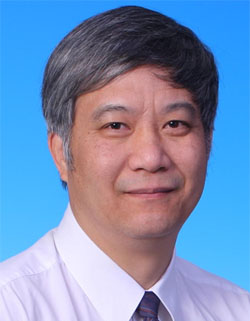 Ben Zhong Tang received his B.S. degree from South China University of Technology and Ph.D. degree from Kyoto University. He conducted postdoctoral research at University of Toronto and worked as a senior scientist in the central laboratory of NEOS Corp. He joined the Department of Chemistry at The Hong Kong University of Science & Technology as an assistant professor in 1994 and was promoted to chair professor in 2008. He was elected to the Chinese Academy of Sciences in 2009. He received a Natural Science Award from the Chinese Government and a Senior Research Fellowship Award from the Croucher Foundation in 2007. He is currently serving as Editor-in-Chief of
Ben Zhong Tang received his B.S. degree from South China University of Technology and Ph.D. degree from Kyoto University. He conducted postdoctoral research at University of Toronto and worked as a senior scientist in the central laboratory of NEOS Corp. He joined the Department of Chemistry at The Hong Kong University of Science & Technology as an assistant professor in 1994 and was promoted to chair professor in 2008. He was elected to the Chinese Academy of Sciences in 2009. He received a Natural Science Award from the Chinese Government and a Senior Research Fellowship Award from the Croucher Foundation in 2007. He is currently serving as Editor-in-Chief of 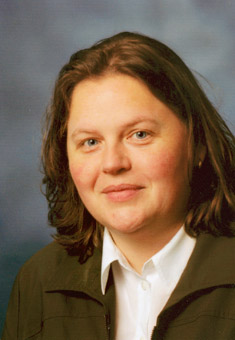 Sabine Beuermann studied chemistry and received a Ph.D. in Physical Chemistry in the group of Michael Buback at the Georg-August-University of Göttingen. After working as a visiting scientist at the DuPont Experimental Station in Wilmington/DE, she returned to Göttingen to work on her habilitation, which was finalized with the habilitation thesis on homogeneous phase polymerizations in supercritical carbon dioxide and the venia legendi for Technical and Macromolecular Chemistry. Since 2006 she is professor of Polymer Chemistry at the University of Potsdam. Current research interest include synthesis, characterization, and modification of vinylidene fluoride polymers, polymerizations in supercritical carbon dioxide or ionic liquids, reversible deactivated radical polymerizations, functionalization of nanoparticles or fullerenes with fluorinated polymers, and detailed investigations into the kinetics of radical polymerizations. Since 1996 she is a member of the IUPAC Subcommittee on “Modeling of Kinetics and Processes of Polymerization”.
Sabine Beuermann studied chemistry and received a Ph.D. in Physical Chemistry in the group of Michael Buback at the Georg-August-University of Göttingen. After working as a visiting scientist at the DuPont Experimental Station in Wilmington/DE, she returned to Göttingen to work on her habilitation, which was finalized with the habilitation thesis on homogeneous phase polymerizations in supercritical carbon dioxide and the venia legendi for Technical and Macromolecular Chemistry. Since 2006 she is professor of Polymer Chemistry at the University of Potsdam. Current research interest include synthesis, characterization, and modification of vinylidene fluoride polymers, polymerizations in supercritical carbon dioxide or ionic liquids, reversible deactivated radical polymerizations, functionalization of nanoparticles or fullerenes with fluorinated polymers, and detailed investigations into the kinetics of radical polymerizations. Since 1996 she is a member of the IUPAC Subcommittee on “Modeling of Kinetics and Processes of Polymerization”. Graeme Moad was born in Orange, NSW, Australia. He obtained his BSc (Hons, First Class) and PhD from the University of Adelaide in the field of organic free radical chemistry. After undertaking post-doctoral research at Pennsylvania State University in the field of biological organic chemistry he joined CSIRO in 1979 where he is is currently a chief research scientist. He is also a project leader within the Cooperative Research Centre for Polymers. Dr Moad is author or co-author of over 150 publications, co-inventor of 34 patent families (12 relate to the RAFT process) and co-author of the book “The Chemistry of Radical Polymerization”. More than 12,500 papers cite his work and his h-index is 52. His research interests lie in the fields of polymer design and synthesis (radical polymerization, reactive extrusion, polymer nanocomposites) and polymerization kinetics and mechanism. Dr Moad is a Fellow of the Royal Australian Chemical Institute and he has recently been elected as a titular member of the Polymer Division of the International Union of Pure and Applied Chemistry.
Graeme Moad was born in Orange, NSW, Australia. He obtained his BSc (Hons, First Class) and PhD from the University of Adelaide in the field of organic free radical chemistry. After undertaking post-doctoral research at Pennsylvania State University in the field of biological organic chemistry he joined CSIRO in 1979 where he is is currently a chief research scientist. He is also a project leader within the Cooperative Research Centre for Polymers. Dr Moad is author or co-author of over 150 publications, co-inventor of 34 patent families (12 relate to the RAFT process) and co-author of the book “The Chemistry of Radical Polymerization”. More than 12,500 papers cite his work and his h-index is 52. His research interests lie in the fields of polymer design and synthesis (radical polymerization, reactive extrusion, polymer nanocomposites) and polymerization kinetics and mechanism. Dr Moad is a Fellow of the Royal Australian Chemical Institute and he has recently been elected as a titular member of the Polymer Division of the International Union of Pure and Applied Chemistry. Directeur de Recherches at CNRS, Bruno Ameduri leads the “Fluoropolymers and Energy” team at the “Engineering and Macromolecular Architectures” Team of Institute Charles Gerhardt in Montpellier, France. His main interests focus on the synthesis and the characterization of fluorinated monomers (including cure site monomers and telechelics), telomers and copolymers for various applications such as surfactants, elastomers, coatings, and polymers related to energy (fuel cell membranes, polymer gel electrolytes for Li-ions batteries and PV). Coauthor of one book, 22 reviews or chapters of books, more than 210 peer review publications and coinventor of more than 55 patents, he is also a member of the American and French Chemical Societies and is a member of the Editorial Boards of the Journal of Fluorine Chemistry, European Polymer Journal, Polymer Bulletin, and Associated editor of Polymer Journal (Japan). Out of research, Bruno enjoys cycling, skiing, jogging and playing soccer and tennis with his 2 sons, and is an active member of the “Rire” Association and, dressed as a clown, visits sick children in hospitals of Montpellier and abroad.
Directeur de Recherches at CNRS, Bruno Ameduri leads the “Fluoropolymers and Energy” team at the “Engineering and Macromolecular Architectures” Team of Institute Charles Gerhardt in Montpellier, France. His main interests focus on the synthesis and the characterization of fluorinated monomers (including cure site monomers and telechelics), telomers and copolymers for various applications such as surfactants, elastomers, coatings, and polymers related to energy (fuel cell membranes, polymer gel electrolytes for Li-ions batteries and PV). Coauthor of one book, 22 reviews or chapters of books, more than 210 peer review publications and coinventor of more than 55 patents, he is also a member of the American and French Chemical Societies and is a member of the Editorial Boards of the Journal of Fluorine Chemistry, European Polymer Journal, Polymer Bulletin, and Associated editor of Polymer Journal (Japan). Out of research, Bruno enjoys cycling, skiing, jogging and playing soccer and tennis with his 2 sons, and is an active member of the “Rire” Association and, dressed as a clown, visits sick children in hospitals of Montpellier and abroad.
 Nicolay V. (Nick) Tsarevsky obtained his M.S. in theoretical chemistry and chemical physics from the University of Sofia, Bulgaria (1999) and Ph.D. in chemistry from Carnegie Mellon University in Pittsburgh, PA (2005), where he worked in Prof. Kris Matyjaszewski’s labs. His work was related to the synthesis of functional polymers by atom transfer radical polymerization and the development of rules for rational selection of the catalyst for various reaction media, including aqueous solvents. He has authored and coauthored more than 65 peer-reviewed journal papers or book chapters, a textbook for high school students, and several patents. He was awarded several national awards, including the Kenneth G. Hancock Memorial Award in Green Chemistry (2003) and the National Starch & Chemical Award (2008). Nick was Visiting Assistant Professor at the Department of Chemistry at Carnegie Mellon University (2005-6), Associate Director of the CRP Consortium (2006), and a member of the founding team of ATRP Solutions, Inc., of which he served as Chief Science Officer (2007-10). He was secretary (2005) and chair (2006) of the Polymer Group of the Pittsburgh Section of ACS, as well as chair of the Section (2009). He joined the Department of Chemistry at Southern Methodist University in the summer of 2010. Current research interests include polymerization techniques, functional materials, coordination chemistry and catalysis, and the chemistry of hypervalent compounds.
Nicolay V. (Nick) Tsarevsky obtained his M.S. in theoretical chemistry and chemical physics from the University of Sofia, Bulgaria (1999) and Ph.D. in chemistry from Carnegie Mellon University in Pittsburgh, PA (2005), where he worked in Prof. Kris Matyjaszewski’s labs. His work was related to the synthesis of functional polymers by atom transfer radical polymerization and the development of rules for rational selection of the catalyst for various reaction media, including aqueous solvents. He has authored and coauthored more than 65 peer-reviewed journal papers or book chapters, a textbook for high school students, and several patents. He was awarded several national awards, including the Kenneth G. Hancock Memorial Award in Green Chemistry (2003) and the National Starch & Chemical Award (2008). Nick was Visiting Assistant Professor at the Department of Chemistry at Carnegie Mellon University (2005-6), Associate Director of the CRP Consortium (2006), and a member of the founding team of ATRP Solutions, Inc., of which he served as Chief Science Officer (2007-10). He was secretary (2005) and chair (2006) of the Polymer Group of the Pittsburgh Section of ACS, as well as chair of the Section (2009). He joined the Department of Chemistry at Southern Methodist University in the summer of 2010. Current research interests include polymerization techniques, functional materials, coordination chemistry and catalysis, and the chemistry of hypervalent compounds.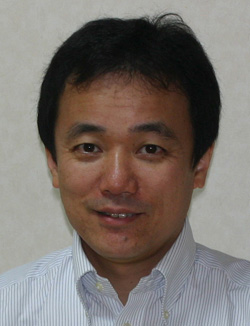 Masami Kamigaito was born in 1965 in Nagoya, Japan. He received his B.S. (1988), M.S. (1990), and Ph.D. (1993) in polymer chemistry from Kyoto University under the direction of Professor Toshinobu Higashimura. After conducting postdoctoral research with Professor Mitsuo Sawamoto, he joined the faculty of Kyoto University in 1995, where he was promoted to Associate Professor in 1999. In 2003, he moved to Nagoya University and worked as an Associate Professor with Professor Yoshio Okamoto. In 2004, he was promoted to Professor. From 1997–1998, he worked as a visiting scientist at Stanford University with Professor Robert M. Waymouth. He was the recipient of the 2001 Arthur K. Doolittle Award of the ACS PMSE Division, the 2009 Wiley Polymer Science Award of the Society of Polymer Science, Japan, and the 2010 Japan IBM Science Award (Chemistry). His research interests include controlled radical and cationic polymerizations, the development and application of new polymerizations to precision polymer synthesis, and controlled polymerizations of renewable vinyl monomers.
Masami Kamigaito was born in 1965 in Nagoya, Japan. He received his B.S. (1988), M.S. (1990), and Ph.D. (1993) in polymer chemistry from Kyoto University under the direction of Professor Toshinobu Higashimura. After conducting postdoctoral research with Professor Mitsuo Sawamoto, he joined the faculty of Kyoto University in 1995, where he was promoted to Associate Professor in 1999. In 2003, he moved to Nagoya University and worked as an Associate Professor with Professor Yoshio Okamoto. In 2004, he was promoted to Professor. From 1997–1998, he worked as a visiting scientist at Stanford University with Professor Robert M. Waymouth. He was the recipient of the 2001 Arthur K. Doolittle Award of the ACS PMSE Division, the 2009 Wiley Polymer Science Award of the Society of Polymer Science, Japan, and the 2010 Japan IBM Science Award (Chemistry). His research interests include controlled radical and cationic polymerizations, the development and application of new polymerizations to precision polymer synthesis, and controlled polymerizations of renewable vinyl monomers.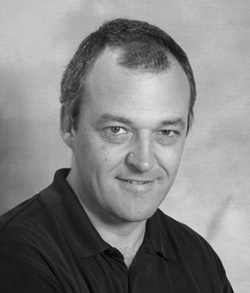 Steve P. Armes graduated with BSc (1983) and PhD (1987) degrees from Bristol University. Post-doctoral fellow at Los Alamos National Laboratory, New Mexico from 1987 to 1989. Academic at Sussex University for fifteen years (promoted to full Professor in 2000) being moving to a Personal Chair at Sheffield University in 2004. Currently Director of the Sheffield Polymer Centre, academic director of METRC and also a director of Farapack Polymers, a polymer services spin-out company. Published around 415 papers (H-index = 74) and named inventor on 16 patent applications. Awarded the RSC Macro Group prize for polymer science in 2007 and the RSC Peter Day prize for soft matter research in 2010. Recipient of a Royal Society-Wolfson Research Merit Award (2005-2009). Current research interests include: RAFT aqueous dispersion polymerisation; controlled-structure water-soluble polymers; block copolymer self-assembly; colloidal nanocomposite particles; stimulus-responsive polymers; conducting polymer particles; biocompatible block copolymers; branched copolymers; polymer brushes via surface polymerisation; macromonomers; novel sterically-stabilised latexes; interfacially-active particles for the preparation of Pickering emulsions and colloidosomes.
Steve P. Armes graduated with BSc (1983) and PhD (1987) degrees from Bristol University. Post-doctoral fellow at Los Alamos National Laboratory, New Mexico from 1987 to 1989. Academic at Sussex University for fifteen years (promoted to full Professor in 2000) being moving to a Personal Chair at Sheffield University in 2004. Currently Director of the Sheffield Polymer Centre, academic director of METRC and also a director of Farapack Polymers, a polymer services spin-out company. Published around 415 papers (H-index = 74) and named inventor on 16 patent applications. Awarded the RSC Macro Group prize for polymer science in 2007 and the RSC Peter Day prize for soft matter research in 2010. Recipient of a Royal Society-Wolfson Research Merit Award (2005-2009). Current research interests include: RAFT aqueous dispersion polymerisation; controlled-structure water-soluble polymers; block copolymer self-assembly; colloidal nanocomposite particles; stimulus-responsive polymers; conducting polymer particles; biocompatible block copolymers; branched copolymers; polymer brushes via surface polymerisation; macromonomers; novel sterically-stabilised latexes; interfacially-active particles for the preparation of Pickering emulsions and colloidosomes.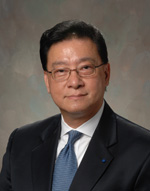 Stephen Z. D. Cheng is an American polymer scientist and chemical engineer. Cheng is the current Dean of the College of Polymer Science & Polymer Engineering, and the R.C.Musson & Trustees Professor of Polymer Science at the University of Akron. Cheng became faculty as an assistant professor of polymer science at the University of Akron in October 1987. He was promoted to associate professor with tenure in 1991, and further the professor of polymer science in 1995. Cheng became the Trustees Professor of Polymer Science in September 1998, and the Robert C. Musson Professor of Polymer Science in 2001, all at the University of Akron. From 2001 to 2005, Cheng was the Chairman of the Department of Polymer Science at the University of Akron, and he was appointed Dean of the College of Polymer Science & Polymer Engineering on August 1, 2007.
Stephen Z. D. Cheng is an American polymer scientist and chemical engineer. Cheng is the current Dean of the College of Polymer Science & Polymer Engineering, and the R.C.Musson & Trustees Professor of Polymer Science at the University of Akron. Cheng became faculty as an assistant professor of polymer science at the University of Akron in October 1987. He was promoted to associate professor with tenure in 1991, and further the professor of polymer science in 1995. Cheng became the Trustees Professor of Polymer Science in September 1998, and the Robert C. Musson Professor of Polymer Science in 2001, all at the University of Akron. From 2001 to 2005, Cheng was the Chairman of the Department of Polymer Science at the University of Akron, and he was appointed Dean of the College of Polymer Science & Polymer Engineering on August 1, 2007.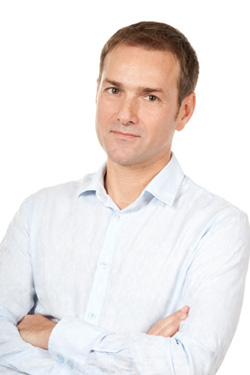 Pr. Mathias Destarac was born in Nogent sur Marne, France, in 1970. He undertook his undergraduate studies in France at the University of Montpellier and obtained his “Diplome d’Ingenieur” in 1993 in the field of materials science. He received his PhD in 1997 from the University of Montpellier for his studies on controlled radical polymerization. He then got a postdoctoral fellow position in Pr. Matyjaszewski’s group at Carnegie Mellon University in Pittbursgh, USA, where he focused his research work on atom transfer radical polymerization. He moved to Rhodia France in late 1998 to undertake the challenge of industrial research. His Rhodia research has mainly focussed on developing the RAFT/MADIX polymerization. Over the course of his career at Rhodia, he occupied successive positions as Senior Research Fellow, Project Manager and Scientific Expert. He originated and supervised a great deal of academic collaborations on various aspects of polymerization chemistry.
Pr. Mathias Destarac was born in Nogent sur Marne, France, in 1970. He undertook his undergraduate studies in France at the University of Montpellier and obtained his “Diplome d’Ingenieur” in 1993 in the field of materials science. He received his PhD in 1997 from the University of Montpellier for his studies on controlled radical polymerization. He then got a postdoctoral fellow position in Pr. Matyjaszewski’s group at Carnegie Mellon University in Pittbursgh, USA, where he focused his research work on atom transfer radical polymerization. He moved to Rhodia France in late 1998 to undertake the challenge of industrial research. His Rhodia research has mainly focussed on developing the RAFT/MADIX polymerization. Over the course of his career at Rhodia, he occupied successive positions as Senior Research Fellow, Project Manager and Scientific Expert. He originated and supervised a great deal of academic collaborations on various aspects of polymerization chemistry.